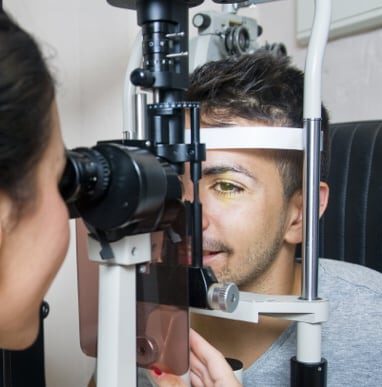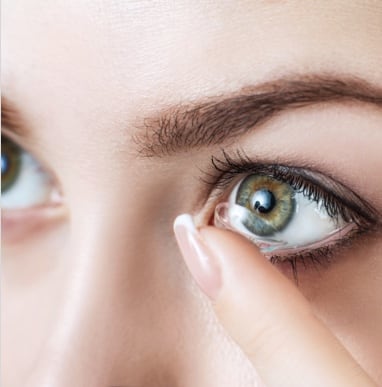Meibomian gland dysfunction (MGD) is a prevalent eye condition that affects the meibomian glands, which are tiny oil glands located along the rim of the eyelids.
These glands are vital in maintaining a healthy eye tear film by producing oil (meibum) on the eye’s surface. This oil prevents the evaporation of the eye’s tear layer, keeping the eyes lubricated and comfortable. This oil, in turn, helps keep dry eye syndrome at bay.
While it may sound complex, meibomian gland dysfunction can be a manageable condition once understood, with treatment options including OptiLight IPL, heat therapy, eyelid debridement, artificial tears and medicated eye drops, punctal plugs, and changes to your lifestyle.
Wearing sunglasses can also help maintain the oils in your eyes. They act as a protective barrier against wind and dust, which can cause the evaporation of the eye’s natural moisture.
What Are Meibomian Glands?
Before delving into MGD, let’s understand the role of meibomian glands in eye health. Meibomian glands are small glands located within the eyelids, primarily responsible for producing meibum—a lipid-rich substance that forms the outermost layer of the tear film. This layer helps prevent tears’ evaporation and maintains the tear film’s stability, which is crucial for maintaining clear vision and eye comfort.
What Is Meibomian Gland Dysfunction (MGD)?
Meibomian gland dysfunction occurs when these glands become blocked or dysfunctional, leading to an insufficient or altered quality of meibum production. This dysfunction disrupts the tear film’s composition, resulting in symptoms like dryness, irritation, and inflammation of the eyes. Several factors can contribute to the development of MGD, including:
Poor Eyelid Hygiene
Inadequate cleansing of the eyelids can lead to the accumulation of debris and bacteria, blocking the meibomian gland ducts.
Age
As individuals age, meibomian glands can become less efficient, increasing the risk of MGD.
Environmental Factors
Factors such as low humidity, prolonged screen time, and exposure to air pollutants can exacerbate MGD symptoms.
Systemic Conditions
Certain medical conditions like rosacea, blepharitis, and autoimmune diseases can predispose individuals to MGD.
Symptoms of Meibomian Gland Dysfunction
The symptoms of MGD can vary in severity but commonly include:
- Dryness: A sensation of dryness or grittiness in the eyes
- Redness: The eyes may appear red or bloodshot
- Irritation: Constant itching, burning, or stinging sensations
- Blurry vision: Blurred vision, particularly upon waking or during prolonged periods of reading or screen time
- Sensitivity to light: Increased sensitivity to light, known as photophobia
Treatment Options
Managing MGD typically involves a combination of at-home remedies and professional interventions. Some common treatment options include:
OptiLight IPL
OptiLight by Lumenis is an FDA-approved, light-based, non-invasive procedure designed to alleviate dry eye symptoms by targeting the area beneath the eyes. It stands out as the first and only intense pulsed light (IPL) therapy granted FDA approval for managing dry eye conditions.
The treatment is recognized for its safety and gentleness, supported by over 20 clinical studies demonstrating its effectiveness. OptiLight offers substantial relief from dry eye symptoms through a multifaceted approach that includes:
- Extending the duration of tear stability
- Decreasing the population of demodex mites and bacteria around the eyes
- Removing blood vessels that lead to inflammation
- Enhancing the performance of the meibomian glands
Patients undergoing OptiLight therapy may experience a mild warming sensation as the light targets the specified area, but the process is generally comfortable. After completing the OptiLight session, there is no required recovery period, allowing individuals to resume their everyday activities.
Heat Therapy
If your dry eyes stem from obstructed meibomian glands, we offer a treatment in our office designed to warm and express the blocked oil, known as meibum. This procedure aims to restore the free flow of meibum, helping it effectively lubricate the surface of your eye.
Eyelid Debridement
In certain cases, an accumulation of bacteria on the eyelids can significantly contribute to dry eye symptoms, such as crusty eyelashes and inflamed eyelids, often resulting from a condition known as blepharitis.
To address this, we offer specialized in-office procedures like BlephEx, which are designed to remove this bacterial buildup and alleviate associated discomforts. Additionally, the optometrist might suggest various lid hygiene practices that can be performed at home to further manage the condition.
Artificial Tears & Medicated Eye Drops
Incorporating preservative-free eye drops can complement other treatments for dry eye.
To tackle inflammation causing your symptoms, your optometrist might recommend specific medicated or steroid eye drops.
Punctal Plugs
Punctal plugs are small implements placed into the tear ducts to prolong the presence of tears on the eye’s surface, enhancing their ability to safeguard your eye.
Lifestyle Change
Factors such as the amount of time you spend in front of screens, the configuration of your workspace, the medications you’re on, the kind of contact lenses you use, and your nutritional habits can exacerbate symptoms of dry eye. Your optometrist can suggest straightforward adjustments to alleviate these symptoms.
Managing Meibomian Gland Dysfunction
If left untreated, meibomian gland dysfunction can significantly impact eye health and quality of life. However, with proper management and timely intervention, individuals with MGD can experience relief from symptoms and maintain clear, comfortable vision.
If you’re experiencing symptoms of MGD, it’s essential to consult your eye care professional at Vision Care Center for an accurate diagnosis and personalized treatment plan.
Remember, prioritizing good eyelid hygiene and addressing contributing factors can go a long way in managing MGD effectively. We encourage you to book your next eye exam today!












